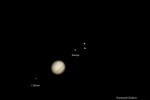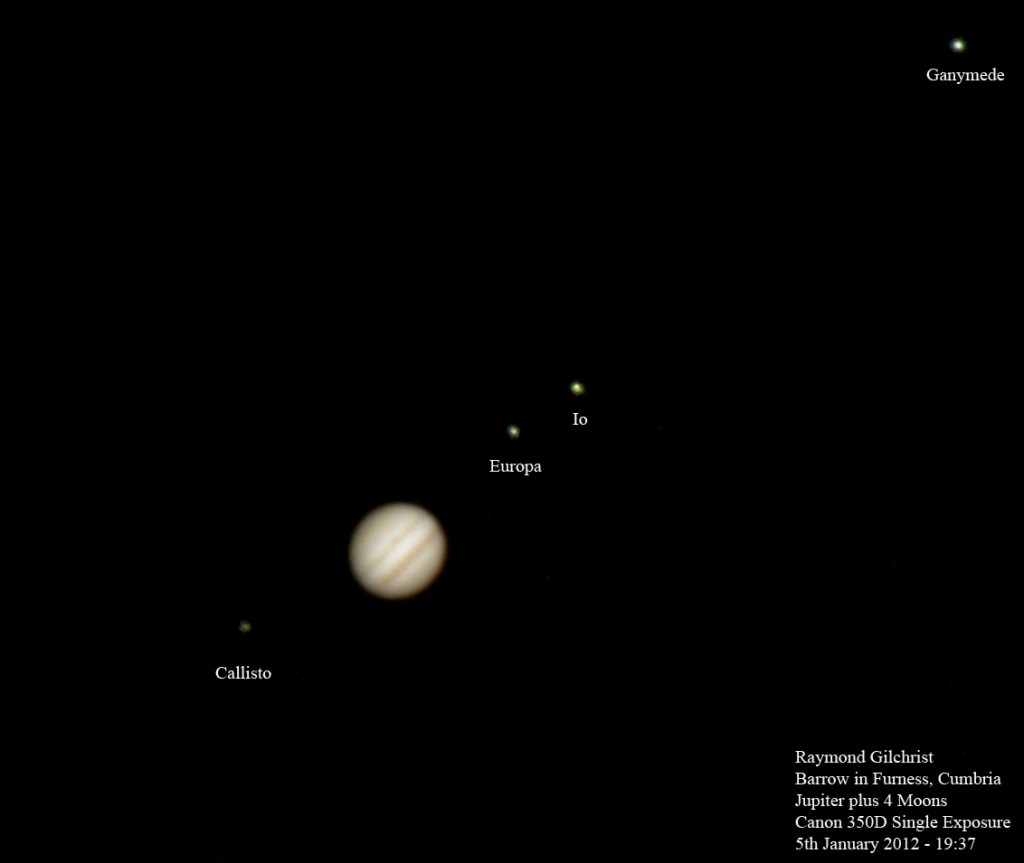January 2012
A rather slow star for me in Cumbria, the weather has been very cloudy and windy, too windy to set a scope up for photography. So far only one session and that was from home.
Jupiter 5th Planet from the Sun.
Jupiter is 318 times the mass of the Earth and has over 63 moons, but the 4 main moons can be seen with a moderate size telescope or binoculars (tripod Mounted). The 4 main moons are called Io, Europa, Callisto and Ganymede.
Here is a picture I took on the 5th January 2012 showing the cloud belts of Jupiter and the 4 main moons. This single exposure was taken with a SkyWatcher 200p mounted on a EQ5 mount with SynScan tracking and the Camera was my trusty 350D – 1/6 second exposure at @ISO400 – Planetary 32mm eyepiece fitted directly onto the 350D and using 2x Barlow/x2 Barlow.
In January Jupiter rises in the afternoon and sets well after midnight, from about 6pm look in the South/East for a very bright star (it appears as a bright star to naked eye) but is in fact the planet Jupiter and by 8pm it will be directly South. Its magnitude is -2.5 which is very bright.
Raymond Gilchrist

